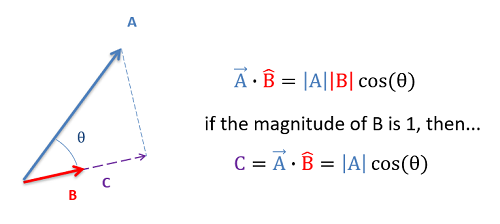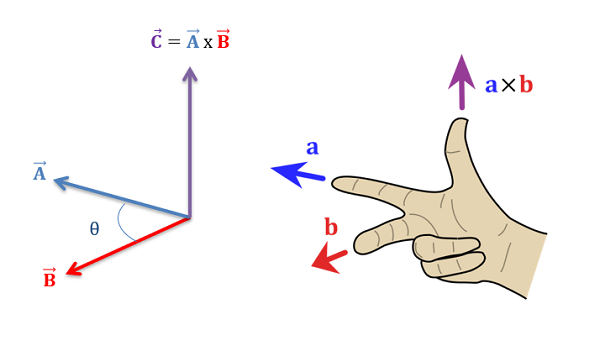Vectors
|
Scalars and Vectors: Scalars, such as time, have magnitude only. They are specified by a number with a unit (10 s) and obey the rules of arithmetic and ordinary algebra. Vectors, such as displacement, have both magnitude and direction (5 m, north) and obey the rules of vector algebra.
Adding Vectors Geometrically: Two vectors, a and b (vectors can be written boldface or with a little arrow above them), may be added geometrically by drawing them to a common scale and placing them head to tail. The vector connecting the tail of the first to the head of the second is the vector sum s. To subtract b from a, reverse the direction of b to get -b; then add -b to a. Vector addition is commutative and obeys the associative law.
Components of a Vector: The (scalar) components a(subscript)x and a(subscript)y of any two-dimensional vector a along the coordinate axes are found by dropping perpendicular lines from the ends of a onto the coordinate axes. The components are given by:
where theta is the angle between the positive direction of the x axis and the direction of a. The algebraic sign of a component indicates its direction along the associated axis. Given its components, we can find the magnitude and orientation of the vector a with:
Unit-Vector Notation: Unit vectors i-hat, j-hat, and k-hat have magnitudes of unity and are directed in the positive directions of the x, y, and z axes, respectively, in a right-handed coordinate system. We can write a vector a in terms of unit vectors as:
in which a(subscript)x i-hat, a(subscript)y j-hat, and a(subscript)z k-hat are the vector components of a and a(subscript)x, a(subscript)y, and a(subscript)z are its scalar components.
Adding Vectors in Component Form: To add vectors in component form, we use the rules:
here a and b are the vectors to be added, and r is the vector sum (resultant). Note that we add components axis by axis.
Product of a Scalar and a Vector: The product of a scalar s and a vector v is a new vector whose magnitude is sv and whose direction is the same as that of v if s is positive, and opposite that of v if s is negative. To divide v by s, multiply v by 1/s.
|
The Dot Product: The scalar (or dot) product of two vectors a and b is written a(dot)b and is the scalar quantity given by:
in which phi is the angle between the directions of a and b. A scalar product is the product of the magnitude of one vector and the scalar component of the second vector along the direction of the first vector. In unit-vector notation:
which may be expanded according to the distributive law. Note that a(dot)b = b(dot)a.
The Cross Product: The vector (or cross) product of two vectors a and b is written a x b and is a vector c whose magnitude c is given by:
in which phi is the smaller of the angles between the directions of a and b. The direction of c is perpendicular to the plane defined by a and b and is given by a right-hand rule. Note that
a x b = -(b x a). In unit-vector notation: which we may expand with the distributive law.
|
Files:
| APCM Chapter 3 Presentation | |
| File Size: | 2928 kb |
| File Type: | ppt |










